Trail Angel Spotlight: Jim “The Spoon Man” Tabor
Whenever you’re out hiking the Appalachian Trail in the rocky hills of Pennsylvania, and you spot a simple hand-carved wooden spoon hanging from a tree branch or a trail sign, there’s a good chance it is the handiwork of Jim Tabor, a local man who’s combined his love of carving with his love of hikers, transforming ordinary wood into one-of-kind works of love.
Jim was born 60 years ago in Maryland, but when he was 11 years old, his family moved up to central Pennsylvania, just a few miles from the Appalachian Trail. Early on, wood and woods were a big part of his life. His dad worked for a lumber company, so he grew up cutting wood, “Whether I wanted to or not,” Jim recalls with nostalgia. Because of many days he and his brother spent in his early years, building tree houses and hunting and fishing in the nearby Appalachian mountains, Jim developed a lifelong love of the wilderness that is still with him to this day.
When his wife’s family moved to Georgia, it wasn’t long before Jim and his wife followed, ending up in Dahlonega. This suited Jim well, because it kept him near Amicalola Falls and Springer Mountain, where he would be able to satisfy his need for wilderness.
In the midst of the scenic beauty of the Appalachian mountains he settled down and started a family. After Tabor and his wife had children, they packed up and headed to where he lives now, in Mont Alto, Pennsylvania. Jim enjoyed being back where he grew up, which allowed him to be near his parents and siblings, plus the AT was just a few miles from his house, which allowed him plenty of opportunity to hike.
The Birth of a Woodcarver
Always good with his hands, Jim decided to take up woodcarving. One day, with no prior experience, he and his brother Tom got together and decided to start making wooden spoons.
“Why spoons, and not figurines or some other form of carving?” I asked. His response was straightforward. “I just like to make spoons, and figure that everybody needs a spoon to eat with.”
They watched YouTube videos, ordered carving tools from a specialized supplier out of Wisconsin, and started carving. The brothers began by making large, kitchen-sized spoons, reducing their size over time until they arrived at the individual size seen today. It was trial-and-error, but over time his spoons took on a unique shape that Jim likes to call “the little trail spoon,” perfectly sized for hikers.
The Beginning of a Calling
As his spoons started to accumulate, Tabor gave them as gifts to family and friends. Seeing how much people loved his handiwork, it motivated him to carve for more people. That was when the idea was born: why not give them to hikers?
Jim isn’t sure when he started giving out spoons on the AT, but he thinks it was probably around 2014.
He would hike along the trail near his home, handing them out to hikers. When he didn’t see any hikers, he would simply hang them from a branch, or set them on a wooden trail sign, often coming back later to check if they were taken. He said that many times he would return to discover they were gone, but sometimes they were still there. He began wondering if some people were hesitant to take them because they might not know why they were there, so he started putting them in little plastic baggies, with a note attached letting them know it was a gift and to feel free to take it with them. Curious about what happens to his spoons, he also left his e-mail address on the card so that hikers could tell him how they found the spoon and where it went. He was delighted when e-mails started coming in, sometimes with pictures showing the places his spoons ended up. Eventually Jim also began posting photos of his spoons on Instagram, @jim_tabor.
Though he leaves about 90% of his spoons on the AT between the Maryland line and Pine Grove Furnace, his spoons are not exclusive to Pennsylvania. “If I’m down on another section of trail, like the Roller Coaster in Virginia, I leave them there,” he said. “I’ve even left some on the Florida Trail.”
Becoming the Spoon Man
As Jim left more spoons out for hikers, he became more than just some man quietly handing out spoons in a lonely stretch of forest. At that time, he had been referring to himself as the Barefoot Carver, hearkening back to his early days when he and his brother Tom carved beneath the shade of their large Norway maple tree, where he did his carving barefooted.
Eventually he caught the attention of Miss Janet Hensley, who gave him the name “Spoon Man.” She asked him to make a large, long-handle spoon for use in spanking hikers, a longstanding tradition she has that came about from when she had to track down hikers who have left a piece of their gear—usually trekking poles in the last town or hostel where they were staying. When she returns it to them, she holds a ceremonial punishment—a spanking with the wooden spoon—as a humorous way to remind them to remember to keep up with their gear. Sometimes her punishment is due whenever a hiker misbehaves in town, as seen in this video.
How He Does It

Jim paints his spoons with a variety of colors, which often includes a little bit of wood-burning art. Photo: Jim Tabor
When Jim makes his spoons, he starts with black cherry, maple, or birch, all sourced from a friend who sells hardwoods. Jim said it takes around three hours to carve out a spoon. Afterward, he does only light sanding on the handle, sometimes using a wood-burning kit to make artwork and lettering, then touches it up with a few splashes of paint, followed up by a coat of mineral oil to seal the spoon.
Balancing a Hobby with the Pressures of Life
Jim has to balance his love of hiking and spoon making with the responsibilities of life, which is made difficult because of the degenerative disc disease in his spine and neck. He also has scoliosis of his spine, exacerbated by the heavy weights he lifts on his welding jobs in the mining industry, where he works up to 48 hours a week. This curvature of his spine causes him to have to adjust his pack straps to compensate for shoulders that are two inches off level.
Even with physical difficulties, Jim still manages to hike up to seven miles to deposit his spoons in remote sections of the Appalachian Trail, and recently hiked 70 miles in one month. While he’s not working at his full-time job, or taking care of the needs of his family, Jim finds relaxation in the hours he spends carving his spoons. He said it is a way for him to decompress from the stresses of life.
Spoon Making and LNT
The Appalachian Trail Conservancy has published a list of principles and practices designed to reduce the damaging effects that hikers make on the trail. These principles are called Leave No Trace (LNT) and contain topics ranging from not harming the wildlife and plant life, not leaving trash or food on the trail, not removing plants, animals or objects, to being respectful of other hikers. Nothing in it specifically addresses any prohibitions against leaving spoons for hikers.
When Jim started posting photos on Instagram of his spoons, he got harshly criticized by someone who insisted his spoons were nothing more than trail trash and violated LNT principles. However, Jim said this person was savagely criticized by his supporters for his comment that he pulled down his post and sent Jim a personal apology. Since then, he’s not heard anything negative about leaving his spoons.
Jim does a lot of trail maintenance while out hanging spoons. He’s carried chainsaws to remove blowdowns, bags to gather trash at shelters, and removes unattended coolers of food and drinks left by well-meaning trail angels.
As much as he loves taking photos of his beautiful spoons, Jim is camera shy and avoids getting his photo taken. He never wants the focus to be on himself. Like a true trail angel, his focus is and has always been about making something special for hikers.
Special Spoons for Special People
- Made a hiker spanking spoon (large kitchen spoon) for Miss Janet.
- Last year he hiked with with a woman who was seven years cancer free and made her a personalized spoon. She liked it so much, she told him she was going to get a tattoo with the exact design of the spoon.
- In 2018 while on the AT in Pennsylvania, he met the Crawfords (family of eight who thru-hiked the AT) and gave them a spoon.
- Met the Real Hiking Viking, “…a super nice guy.”
- Jim made two special spoons engraved with the words “Stronghold” on them as a tribute to veteran Ronald Sanchez Jr, trail name Stronghold, whose tragic on-trail death in 2019 touched the AT community.
The Making of a Legend

Jim made a few spoons last year to commemorate the passing of Ronald Sanchez Jr., trail name Stronghold. Photo: Jim Tabor
When his hobby was beginning to flourish, Jim was asked to make a spoon for The Gathering of Spoons exhibit, which is on permanent display at the Peabody Essex Museum in Salem, Massachusetts. Somewhere along the way, Jim’s craft even caught the attention of National Public Radio, who featured him in one of their stories.
There are even mentions on social media along the lines of: Whoever finds one of Jim’s spoons is almost assured they will make it to Katahdin/Springer. Regardless of the public attention, this humble woodcarver would still be making and leaving spoons along the AT. For Jim, it’s never been about the fame. It’s just the simple love of carving and his love for hikers that keeps him going.
Jim Tabor’s Spoon Carving Future
Jim estimates that he’s made and distributed around 300 spoons. He says he makes about 50 per year to leave on the Appalachian Trail, but if you count the spoons he’s made for charity, the ones he makes for the ATC to sell, the ones he makes for breast cancer awareness, or the ones he makes for a local hiking club, he figures that number is probably closer to 100 annually. He also has made some to sell, but mostly makes them for free. “I’m going to do it till it’s not fun anymore,” but he said he has a goal of making at least 500.
If you happen to be one of the lucky few who discovers one of his spoons hanging from a tree, take a minute to pause and appreciate the fact that somewhere in a little shop in central Pennsylvania, a quiet, peaceable man took three hours out of his life so that not only will you have something useful to eat your ramen bombs with, you will possess a special souvenir that will commemorate perhaps the most epic thing you have ever done.
This website contains affiliate links, which means The Trek may receive a percentage of any product or service you purchase using the links in the articles or advertisements. The buyer pays the same price as they would otherwise, and your purchase helps to support The Trek's ongoing goal to serve you quality backpacking advice and information. Thanks for your support!
To learn more, please visit the About This Site page.

 ">
">
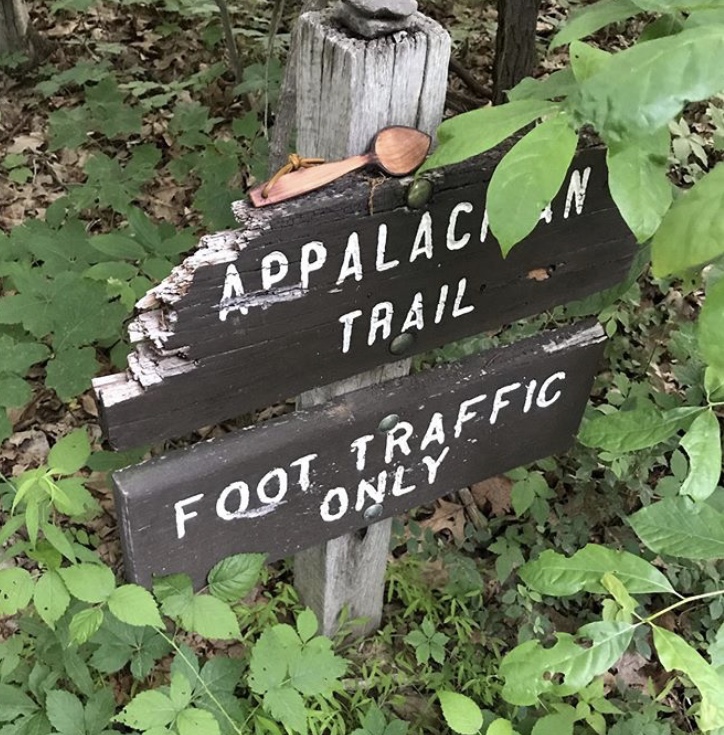
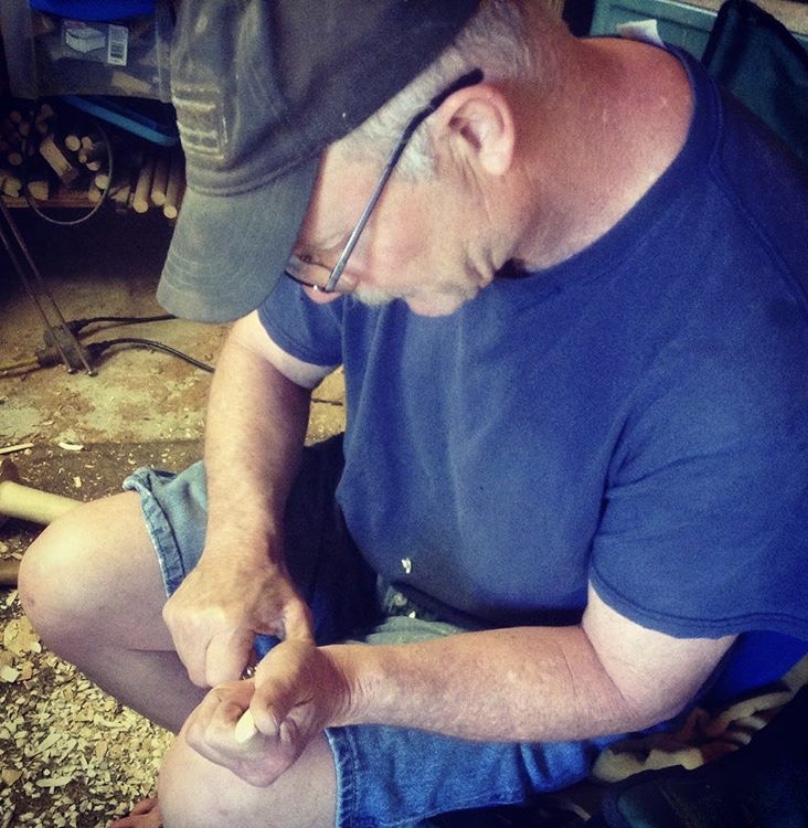

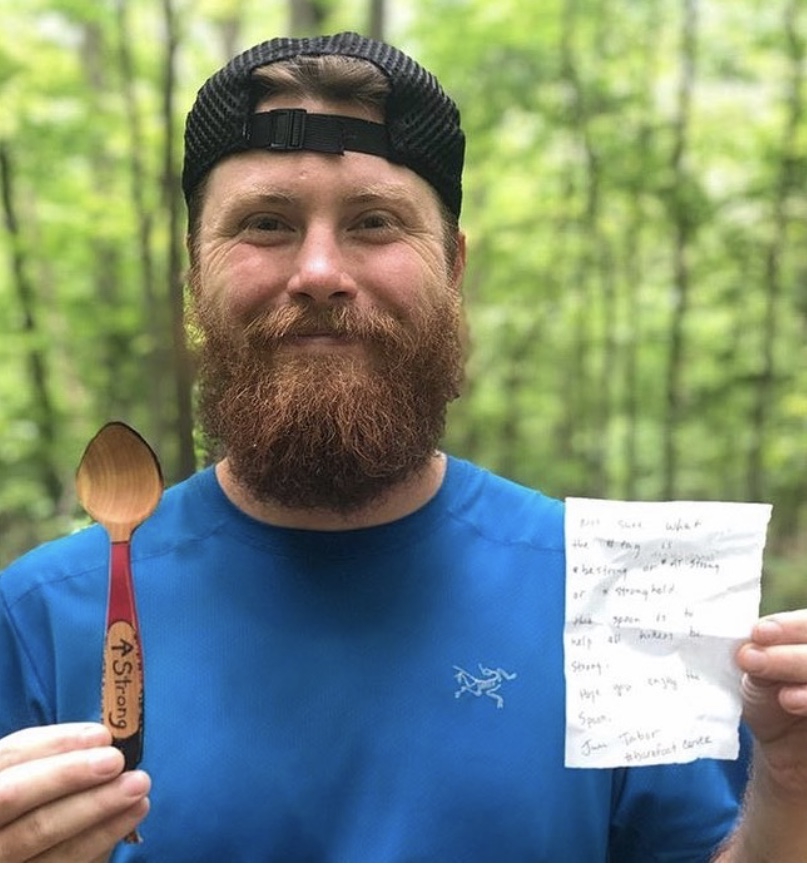
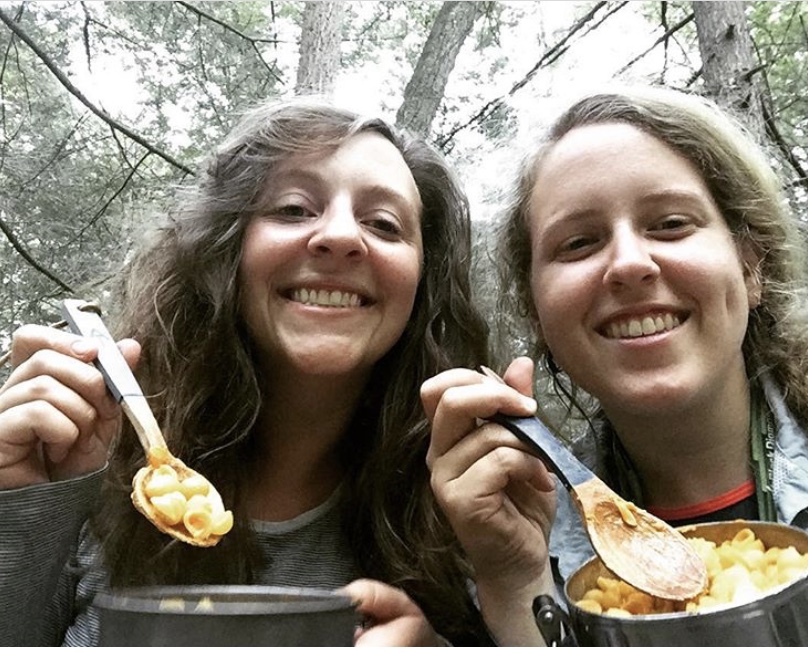


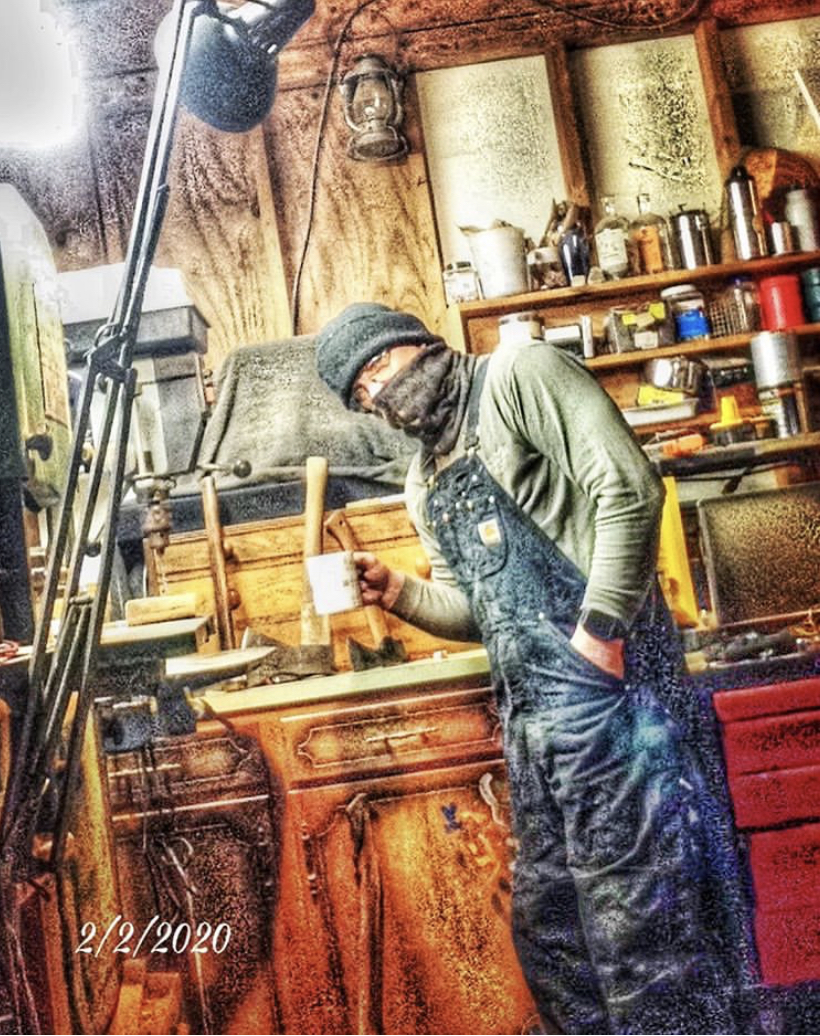



Comments 5
Great article on the Spoon Man! One of the best articles ever.
Great article. Has anyone found a carved hiking pole left by a mysterious trail angel in the 1990’s? We have one of his hiking sticks – It’s pretty special. Thanks trail carvers for the magic!
My daughter is a trail angel in Maine so this story was very interesting to me and I must say very well written .
There are many people doing good things for the Applachian trail it has a certain pull so if you can’t physically walk the trails you do the next best thing and take care of it or feed the hikers.
I would LOVE one of those!
I remember the 1st time I came across a bag of ” trail magic ” hanging from a branch in GA on the AT ….. i spotted it, crept up slowly and cautiously as if there was a camera crew hidden near by then called out HELLO?!?! Figuring someone must have left it while they were pooping.
It was beautiful to find and much appreciated.
Looking back I still laugh at myself for that moment alone in the woods. Thanks spoon man.
I just noticed that Jim ‘Spoon Man’ Tabor disappeared off Instagram. Seems like his account is deleted? Anyone know if he’s OK? I loved seeing all of his posts and spoons he left for people on the AT.